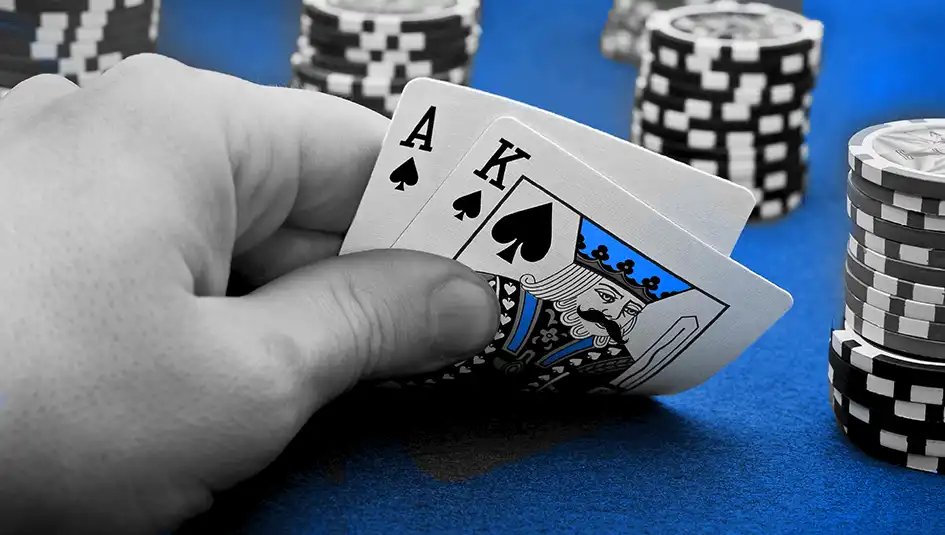The Basics of Playing Craps
Craps offers players many different types of bet, and these shall all be explained. However, it is best to start with the very basics of the game, which will give you a good place to start.
The most basic type of bet is a Pass Line bet, it is a bet placed on the Come Out roll, which is the first roll of a round. If you place this bet then it means that you are betting that the roll will “pass”, which means that it produces a 7 or an 11. There are then three possible outcomes for this bet:
- Roll a 2, 3 or 12 – This is known as “craps” and the bet is immediately lost
- Roll a 7 or 11 – The bet is won and the round is over
- Roll any other number – The dealer marks this number on the Craps table as “On” using a special chip. That number is then referred to as the “Point Number” and it becomes the target to roll.
If the round hasn’t ended, you need to keep rolling the dice until one of two things happen. If you roll the “Point Number” then you win the bet. However, if you first roll a 7 then the bet is lost.
The good news is that you now know enough to play the pass bet, and this is an excellent way to get started with the game. However, there are many more ways to play and many more types of bet for you to take advantage of, which will make the game even more enjoyable.
The Craps Table
One of the reasons that Craps can appear so confusing is that the table layout is anything by self-explanatory. However, really there are just seven sections of it that you need to understand:
- Pass – This is the basic bet as explained above.
- Don’t Pass – This is the inverse of the Pass bet. It is won if “craps” is rolled on the first roll (2, 3 or 12), or a seven is rolled on subsequent rolls
- Come – This bet is the same as a Pass bet, except that it is made before any roll other than the Come Out roll.
- Don’t Come – This is the opposite of the Come bet. In other words, it is the same as the Don’t Pass bet but made before any roll other than the Come Out roll.
- Field – This is a simple bet that the next roll will produce a 2, 3, 4, 9, 10, 11 or 12.
- Place – This is a bet on a specific number being rolled before the next 7 is rolled. You can bet on all numbers other than 7 or a Craps number.
- Hardway Bets – Betting on a hard number requires the number to be rolled with a double. For example, an “easy” 4 may rolled with a 1 and a 3 but a “hard” 4 requires two 2s.
Types of Craps Bets
This is where things can begin to become complicated. This is because there are many types of bets, some of them have to be placed after the pass bet has been made, while others can be placed at any time. Some of the following is a repetition of the information from above, but it is vital that you truly internalise it.
Pass
As explained, this is a bet on the first roll of the dice in a round. It is won if the first roll (also called the Come Out roll) produces a 7 or 11. If it produces a 2, 3, 11 or 12 this is called “Craps” and you lose. If any other number is rolled (4, 5, 6, 8, 9, 10) then the Come Out roll number becomes the point and if you manage to roll that number again before you roll a 7, then the pass bet is won.
Taking the Odds
This is a type of side bet and it is related to the point number. You putting extra money down on winning the pass bet. There is a very important difference between doing this and placing an additional pass bet, which is that there is no house edge, so it is an excellent bet to place.
Don’t Pass
As explained, this is the opposite of a Pass bet. It is won if the Come Out roll produces Craps, or if subsequent rolls produce a 7 (before the Point is rolled again).
Laying the Odds
This is the opposite of a Taking the Odds bet. It is essentially adding money to a Don’t Pass bet and once again, there is no house edge.
Come
The Pass bet only applies to the first roll of a round. The Come bet works in exactly the same way, but it can be made on any other roll during the round. It wins in the same way as a Pass bet.
Don’t Come
This is the same as a Don’t Pass bet but on any roll other than the Come Out roll.
Field
This bet allows for a number of different rolls as winning outcomes. In general, if the next roll produces a 2, 3, 4, 9, 10, 11 or 12 then you will win. Many games offer double or triple payouts for 2s and 12s.
Place Bets
In Craps, the numbers 4, 5, 6, 8, 9, and 10 are known as “Place Numbers”. A Place Bet is a bet that one of these numbers will be rolled before the next 7.
Hardway Bets
This is a bet on the next roll and it is a bet that a specific number will come up, but made of a pair. For example, an 8 produced by a 6 and 2 would not win, but an 8 consisting of two 4s will win.
To Summarise the Rules
At the start of a round is the Come Out roll. Here you can place the Pass or Don’t Pass bets. If that roll produces a 2, 3, 7, 11 or 12 then the round ends and the bet is lost. If it produces any other number, then the number is set as the Point and you can start betting on subsequent rolls. The player keeps rolling until they roll the Point again or a 7, at which point the round ends and the process starts again.
Basic Craps Strategy
Ultimately, Craps is a game of pure chance. There is no way of predicting what the next roll of the dice will produce and there is no way of influencing the outcome. However, some bets have a statistical advantage over others, and some rolls are more likely than others are. For example, there is a 1/36 chance of rolling a 2 as it can only be produced by rolling a double 1, conversely, there is a 1/6 chance of rolling a 7 as it can be produced with 1+6, 6+1, 2+5, 5+2, 3+4 and 4+3.
As a result, there are some basic things that you can do to try to improve your returns:
Bet Against the Dice
A Pass bet, in which you want to see a 7 or 11 rolled, has a house edge of 1.41%. However, a Don’t Pass Bet, in which you want to see a 2, 3 or 12, has a house edge of 1.36%. While this may be a very small difference, it will have an impact in the long term so placing a Don’t Pass bet is advantageous. When playing in a land casino this may offend some players at the table, but online this won’t be a problem.
Always Place Taking the Odds Bet
As mentioned, this type of bet has no house edge whatsoever. It is very rare that a casino has no advantage over a player, so it is definitely worth taking advantage of whenever you can.
Don’t Place Proposition Bets (Field Bets)
This means betting on the result of the next roll. While it may be a more exciting bet, it will not be profitable as it increases the house edge to 13.98%. You can place them occasionally for fun, but it is not a good long-term strategy.
Don’t Place Big 6 and Big 8 Bets
This is another betting area found at either end of the Craps table. These are bets that a 6 or an 8 will be rolled before a 7. Compared to the Place bets on 6 and 8, Big 6 and Big 8 have lower payouts. The Place bets pay at 7:6 and while the Big 6/8 pays at 1:1.
Keep Things Simple
Craps is a game where you will benefit from keeping things simple. For example, many people will advocate using a betting system such as the Martingale. However, the problem with this is that if you hit a losing streak you will very quickly hit the table’s maximum bet and you will burn through your bankroll. It is much better to keep playing with small and affordable bets.
Another thing to avoid is trying to hedge your bets. For example, you may place a €10 bet on the pass line together with a €2 bet on the “Any Craps” bet. It seems like you can’t lose with this bet. If the Come Out roll produces a 7 or 11 then you win €10, you lose the €2 from the Any Craps bet, but you still have a net gain of €8. If the Come Out roll produces a 2, 3, or 12 then you win €14, giving you a net win of €10.
However, this doesn’t consider the possibility of rolling a point. There are 36 possible outcomes for the Come Out roll. Four of them are Any Craps (1+1, 1+2, 2+1, 6+6). Eight of them win the Pass Line bet (1+6, 2+5, 3+4, 4+3, 5+2, 6+1, 5+6, 6+5). That is 12 possibilities where you are guaranteed a profit. Unfortunately, that leaves 24 possibilities, which is two out of three times, where a point is set. Here you lose the Any Craps bet and face the house edge in subsequent rolls.
In other words, while the systems can appear attractive, and they can be enjoyable, ultimately, the important thing is to keep your bets to affordable amounts and not to become caught up in complicated betting patterns or systems.

 A Beginner’s Guide to Casino Hold’em
A Beginner’s Guide to Casino Hold’em A Beginner’s Guide to Cricket Betting
A Beginner’s Guide to Cricket Betting